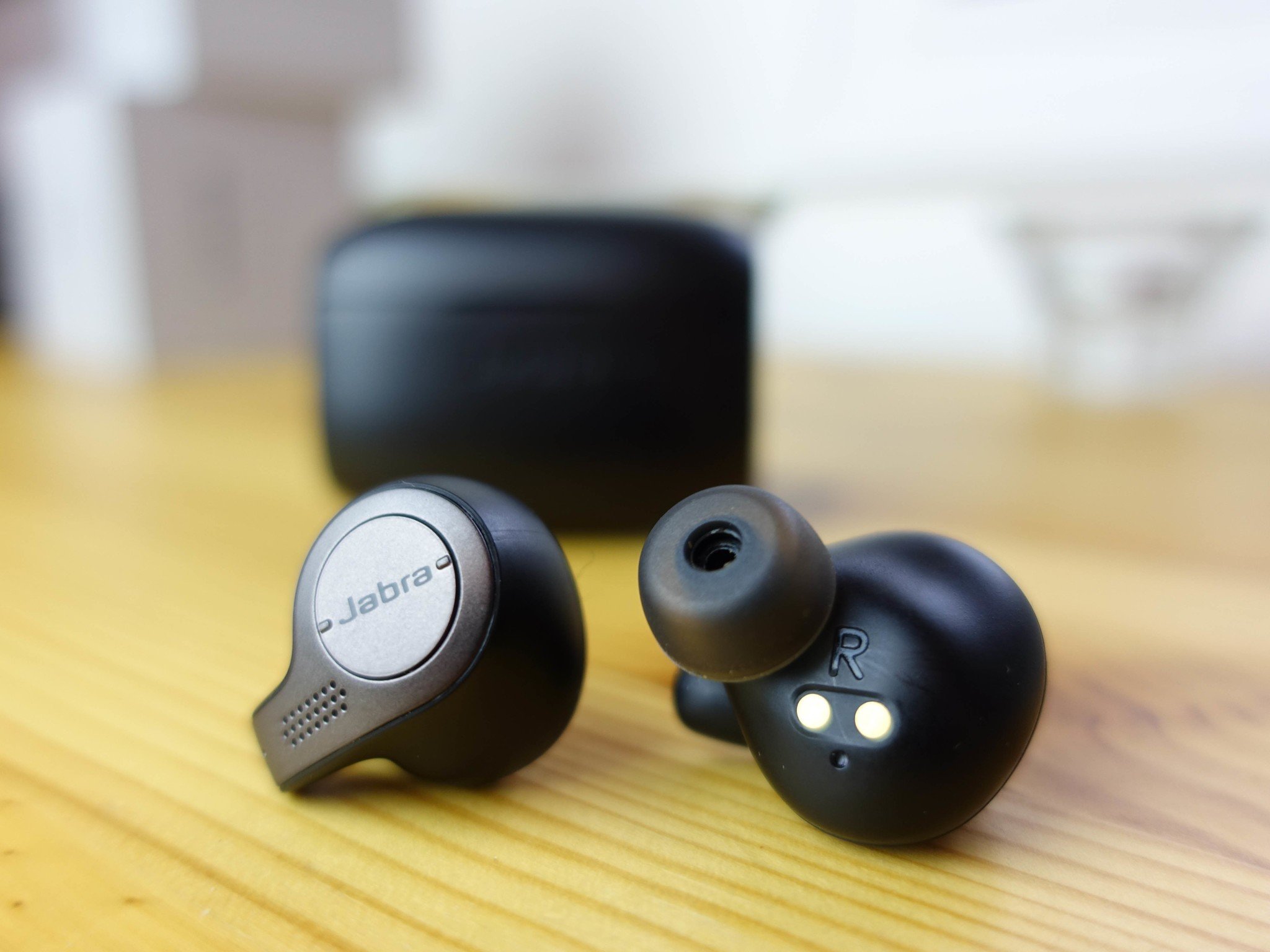To say the AirPods were the first truly wireless earbuds would be a lie, but they're the ones that put the category on the map. Since then, nearly every headphone maker has tried its hand at outdoing the market leader.
It took a couple years, but we're finally reached that moment. In early 2018, Jabra released the Elite 65t truly wireless headphones, and over the past few months I've come to understand why so many people say they're best-in-class.
The Good
- Great sound for truly wireless earbuds
- Intuitive controls that make sense for the size
- A great app that's actually useful
- Decent battery life
- A case that's pocketable
The Bad
- Micro-USB charging
- Minor latency issues with video
- Could be a bit too expensive for some
Here's the thing about this kind of headphone: because of its design, it's inevitably space-constrained. There just isn't the room for a large battery or massive drivers or, most of the time, tactile controls.
Many of the earliest truly wireless earbuds sacrificed battery life for functionality, relying on the charging case to do most of the heavy lifting. It also meant that many of these early models have enormous cases, too big to fit in a pocket. To me, that completely negates the usefulness of this compromise; there's no freedom in having to lug around a charging case in a bag or stuff it uncomfortably into a jacket or pants pocket for the inevitable short-term top-up.
Very few companies have done the charging case well; Apple with the AirPods; Samsung with the second-generation Icon X; a few others. Jabra, thankfully, gets most of it right. The rest is bonus.
Jabra Elite 65t What I like
Let's start with the sound quality: for truly wireless earbuds, it's very good. Part of the praise goes to the design. Unless the tube shape of the AirPods, Jabra's take is a little more rounded, with a minor "Bluetooth headset" protrusion that puts the noise-canceling microphones nearer one's mouth. Once inserted in the ear — the box comes with three silicone tip sizes — there's a tremendous amount of passive isolation, which ensures a most robust bass response than your typical earbuds.
These earbuds sound like decent headphones, which is high praise for this category.
If you're looking for a neutral frequency response you should look elsewhere. These are tuned for easy listening, with an over-emphasis on the low-end and a suppression of the highs, which all but eliminates the brightness commonly found in genres like classical and jazz. Conversely, they sound great for compressed streams of thumping hip-hop or droning EDM, or for podcasts, which I spent most of my time listening to with one just bud in my ear. That flexibility is why I enjoy using products like this — when the one earbud goes empty, you just swap it out and pop the depleted one back in the battery case.
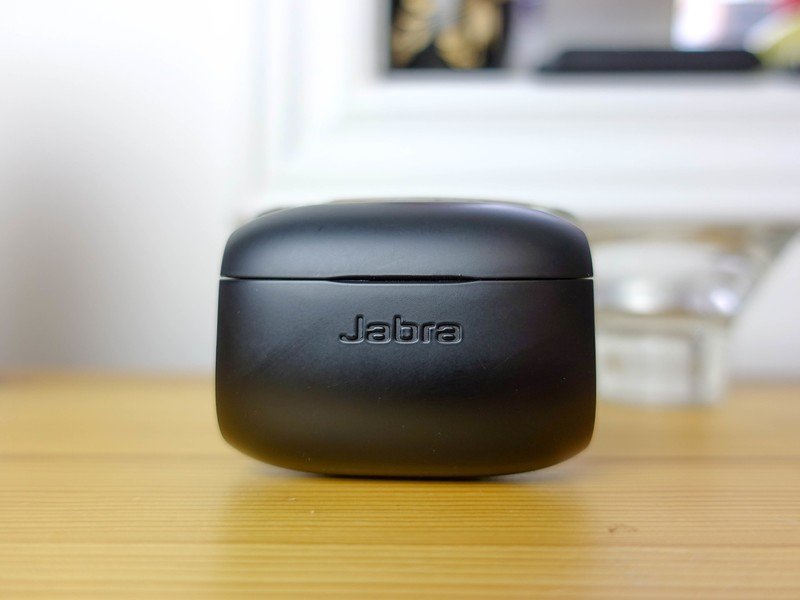
Speaking of the case, Jabra's done a pretty good job with it. Firstly, it's compact — not quite container of floss-sized, but not noticeable in a pocket. There are no buttons on the case itself, since the earbuds have a large control panel on their outer shell for pairing, play/pause, and all the other requisite commands one would expect. The buds nestle beautifully inside the case, which opens by squeezing the sizes. I worry that a nasty drop could snap the case's top, but I haven't experienced any major incidents yet, and I'm holding out hope for a long future together.
Getting back to the controls, each bud takes on a different task: the right side dons power, play/pause, and pairing. The left size controls volume and track-skipping. That Jabra was able to make these feel intuitive and reliable is a testament to their engineering team, because these are among the best I've used on any headphone, especially one this size.
It's a small thing, but the elegant controls — that aren't gesture-based — make a huge difference in how pleasant these are to wear.
Another elegant solution to a common problem is Jabra's "HearThrough" feature, which by double-pressing the right earbud fashions the built-in microphones as a sound passthrough of sorts. We've seen this on other products before — Sony's 1000X series lets you hold your hand over the right cup to temporarily do the same thing — and Jabra nails it here. Good thing, too, because otherwise, I'd be removing the earbud on a regular basis just to have a conversation — the passive isolation is that good (or bad, depending on your needs).
HearThrough also activates automatically when receiving a phone call, which makes the experience sound a bit more natural than it would otherwise. Except for really windy days, the person on the other end of the line told me I sounded clear, crisp, and free of major sibilance — always a bonus. Conversely, I enjoyed using the 65ts for talking on the phone, as they proved comfortable to wear for long periods.

Long-pressing the right earbud's single button also activates the assigned smart assistant, which depending on your platform can be Google Assistant or Siri. Or Alexa. See, the Elite 65ts are one of the first standalone earbuds to work with Amazon's turnkey Alexa integration kit, which taps directly into the company's cloud platform if there's an active internet connection. For the most part, it works well, and has been improved considerably through firmware updates since Jabra released these headphones in early 2018, but Alexa is still nothing like Assistant, and if you're on an Android device you should probably avoid it. Still, it's nice to have.
All three major voice assistants are available, depending on your preference.
Selecting a default voice assistant, along with other granular settings, can be done through the excellent Jabra Sound+ app. In there you can configure one of three "states" — "Default," "Commute," and "Focus." This allows you to set up independent equalization settings for three distinct settings — more bass for that louder commute, for instance — along with whether HearThrough is active by default. The Focus mode even offers one of twelve white noise streams, including "pink noise," "ocean waves," and "perfect storm."
Finally, at five hours per charge and an additional 10 hours in the case, battery life isn't fantastic but it's fine. Until we get a sea change in Bluetooth power efficiency, we're unlikely to see truly wireless earbuds of moderate size with uptimes above seven or eight hours, and given its portability, I'm pretty happy with 15 hours in my pocket.
Jabra Elite 65t What I don't like
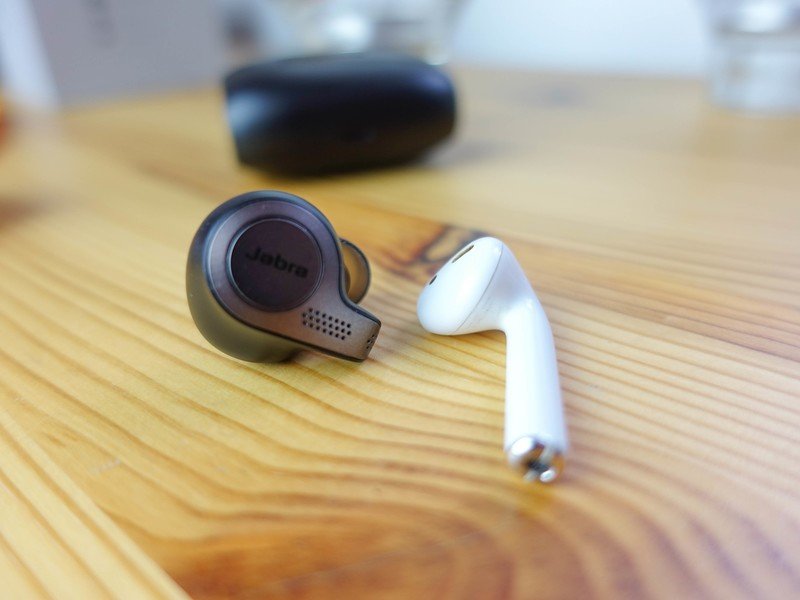
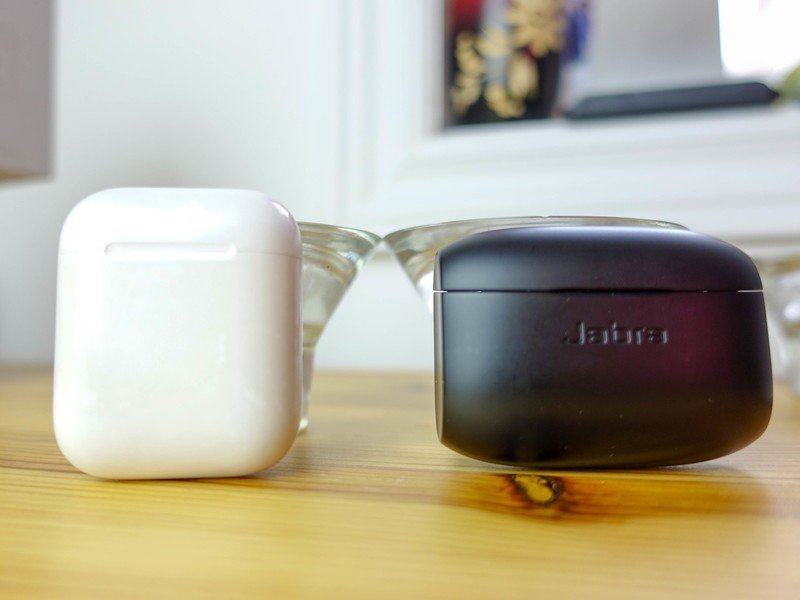
Speaking of charging, that's one of the few downsides to this product. The case charges via Micro-USB which, after coming from the great OnePlus Bullets Wireless and pretty-good-but-not-amazing Samsung Icon X (2018), which both charge using USB-C, needing to be particular about the direction in which I plug in my cable is a bit tiresome. It's a minor blemish on an otherwise unassailable product, but it's still worth mentioning.
And the case itself, while still quite portable, isn't the tiny, magnetic-latching engineering achievement of the AirPods. It's all plastic, a little creaky, and the earbuds have to be placed just so to hit the charging pins.
Micro-USB charging was problematic when these were released a year ago. Now it just feels insulting.
And as with most truly wireless headphones, the Elite 65ts have a slight audio latency discrepancy between what's shown on screen and what you hear in your ears. It's nowhere near as bad as, say, Jaybird's Run headphones, but due to how the earbuds are designed — the right bud connects to the phone, and the left bud relays its message through the right — dialogue and other sound effects are slightly out of sync. It's only really pronounced when watching something with lots of dialogue, but these earbuds wouldn't by first choice to watch The Godfather while sitting on a plane.
Then there's the price. At $160 you can also buy a pair of AirPods, which are inferior in almost every way, but I expect most people to do just that. The Elite 65ts did fall to $120 during Black Friday, and since they're coming up on their first birthday (and are liable to be updated in the coming months) I'd expect a permanent price drop sometime soon. And while I'd easily recommend these at full price, they attract a lot more attention at $120.
So should you buy them? Without hesitation
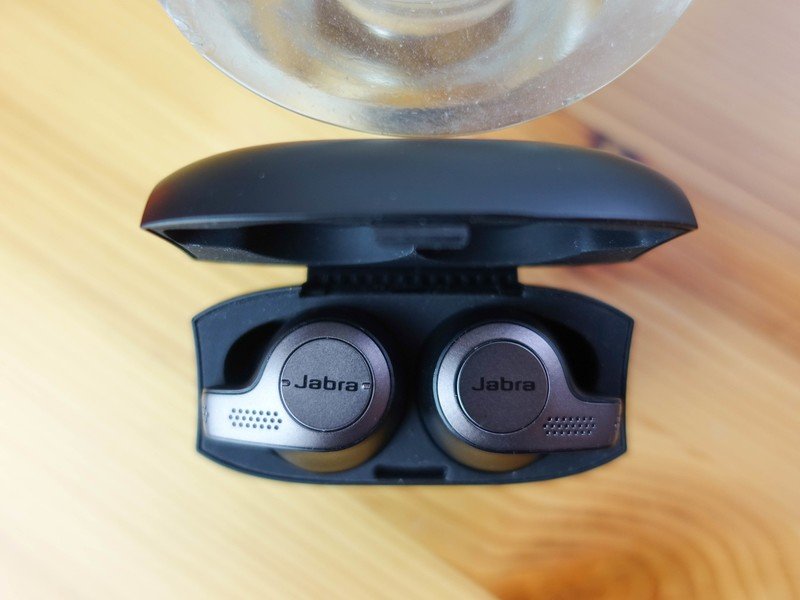
I have been a proponent of using AirPods with Android phones since Apple's white tubes were released in late 2016. They sounded like garbage but were so reliable and so convenient it almost didn't matter. Well, with the Jabra Elite 65ts, I've found a pair of truly wireless earbuds with all of the AirPods' conveniences and none of its aural flaws.
4.5 out of 5
If you've been looking for a pair of truly wireless earbuds that don't look like protruding white ear tubes and actually sound like a decent pair of headphones, Jabra's got your back. Or, I guess, your lobes.
Daniel Bader was a former Android Central Editor-in-Chief and Executive Editor for iMore and Windows Central.
